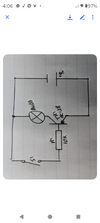an esitmate of worldwide shipments npn versus pnp transistors
ChatGPT said:
There are
no precise public estimates breaking down worldwide shipments of
NPN vs PNP transistors individually, as most industry reports categorize them broadly under
discrete bipolar junction transistors (BJTs) or even lump them into broader "discrete semiconductors."
However, based on industry usage and design preferences, we can provide a
reasonable estimate and rationale:
 Engineering & Market Context:
Engineering & Market Context:
- NPN transistors are far more commonly used than PNP in most applications.
- The vast majority of digital and analog circuit designsfavor NPN due to:
- Better electron mobility (faster switching and higher efficiency).
- Simpler interfacing with common ground-referenced logic systems.
Shipment Estimate (Based on Usage Trends):
From various industry sources and anecdotal evidence (e.g., component distributors, design practices), the ratio is roughly:
NPN: ~80–90%
PNP: ~10–20%
This aligns with:
- Common discrete transistor types sold (e.g., 2N2222, BC547 = NPN).
- Power transistor arrays (e.g., for motor drivers) that mostly use NPN.
- Typical complementary pair designs where NPN is dominant, and PNP is only used where necessary (e.g., push-pull stages).
If We Estimate Volume:
The global market for discrete transistors (excluding power modules) is
tens of billions of units annually.
Example:
- If 50 billion BJTs are shipped yearly, and 85% are NPN:
- ~42.5 billion NPN
- ~7.5 billion PNP
This is a rough estimate and would vary by industry segment (e.g., automotive, consumer electronics, industrial).



